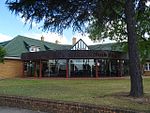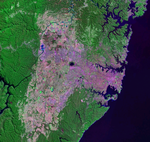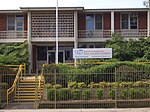The Hills Shire
1906 establishments in AustraliaLocal government areas in SydneyThe Hills ShireUse Australian English from September 2012

The Hills Shire (from 1906 to 2008 as Baulkham Hills Shire) is a local government area in the Greater Sydney region of Sydney, New South Wales, Australia. The suburb is north-west of the Sydney central business district, and encompasses 401 square kilometres (155 sq mi) stretching from the M2 Hills Motorway in the south to Wiseman's Ferry on the Hawkesbury River in the north. The Hills Shire had a population of 157,243 as at the 2016 census.The current mayor of The Hills Shire is Dr. Peter Gangemi (Liberal), who was elected on 21 December 2021.
Excerpt from the Wikipedia article The Hills Shire (License: CC BY-SA 3.0, Authors, Images).The Hills Shire
Linton Street, Sydney Baulkham Hills
Geographical coordinates (GPS) Address Nearby Places Show on map
Geographical coordinates (GPS)
| Latitude | Longitude |
|---|---|
| N -33.766666666667 ° | E 151 ° |
Address
Linton Street
Linton Street
2153 Sydney, Baulkham Hills
New South Wales, Australia
Open on Google Maps







